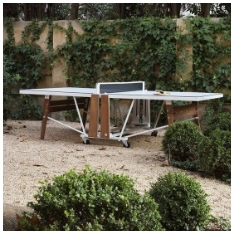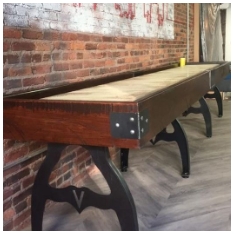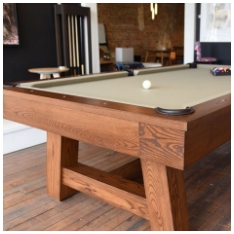Cue sticks are not one-size-fits-all. The right cue can significantly improve your accuracy, consistency, and comfort at the table. Whether you're new to billiards or looking to refine your equipment, understanding how to choose a cue that complements your playing style is a necessary step toward improving your game.
This guide explains the key factors to consider when selecting a cue stick, from length and weight to tip material and construction quality.
Understanding Cue Stick Basics
Before selecting a cue, it helps to understand its components. A pool cue generally ranges from 57 to 59 inches and weighs between 17 and 21 ounces. It's typically made of wood, with options ranging from basic maple to advanced composites and layered materials.
Main Parts of a Cue Stick
- Shaft – The upper, narrower part of the cue that contacts the cue ball.
- Tip – A small leather pad at the end of the shaft, which determines control and spin.
- Ferrule – A protective sleeve just below the tip.
- Joint – Where the shaft and butt connect, often made of metal or plastic.
- Butt – The thicker rear section, sometimes wrapped for grip and comfort.
Each part plays a role in shot performance, cue balance, and player feel.

Cue Stick Length and Your Height
Choosing the correct cue length starts with the player’s height and arm span. A standard cue is around 58 inches, which fits most adult players. However, players under 5’0” or children may find shorter cues (48 or 52 inches) more manageable.
- 48" cues: Best for children or players in tight spaces
- 52" cues: Suited for shorter adults or confined rooms
- 58" cues: Standard for most adults
- 60" cues and longer: Useful for players over 6’5” or with longer arms
Cue length should allow a full, natural stroke without forcing your stance.
Cue Wrap and Grip Preferences
The wrap area of a cue is where your rear hand grips the stick. Materials affect your control and comfort.
- Irish linen wraps: Common, moisture-absorbing, and textured
- Leather wraps: Offer a firmer grip and rich feel
- Rubber grips: Often used on beginner cues for tackiness
- Wrapless cues: Preferred by some for smooth contact with wood
Choose based on how much grip you want and whether your hands sweat during play.
One-Piece vs Two-Piece Cues
Cue sticks come in one-piece or two-piece formats. Understanding the difference can guide your purchase decision.
One-Piece Cues
- Common in bars and pool halls
- Less expensive
- Not portable
Two-Piece Cues
- Easier to transport
- Allow shaft upgrades and maintenance
- Preferred by serious players
For home use, either works. For travel or tournaments, two-piece cues are more practical.
Choosing a Cue for Specific Types of Play
Different types of pool games may benefit from specialized cues.
- Standard play cue: Balanced for all-around performance
- Break cue: Heavier tip and shaft for power
- Jump cue: Shorter and lighter for jump shots
- Sneaky Pete cue: Two-piece disguised as one for discreet use
Most players start with a general-purpose cue and later add game-specific cues as needed.

Trying Cues Before You Buy
Whenever possible, test a few cues before purchasing. Look for comfort in grip, stroke smoothness, and response on different shots. Pool halls, specialty shops, or billiard supply stores often allow testing.
If you’re purchasing online, look for return policies or visit a store to try a similar model in person.
Conclusion
Selecting the right cue stick is about more than just preference. From cue length and weight to material and tip hardness, every detail affects your gameplay. Investing time in choosing the best cue for your style can make a noticeable difference in performance, accuracy, and enjoyment.
Whether you're just starting or refining your gear, use this guide to make informed decisions that enhance your experience at the pool table.





